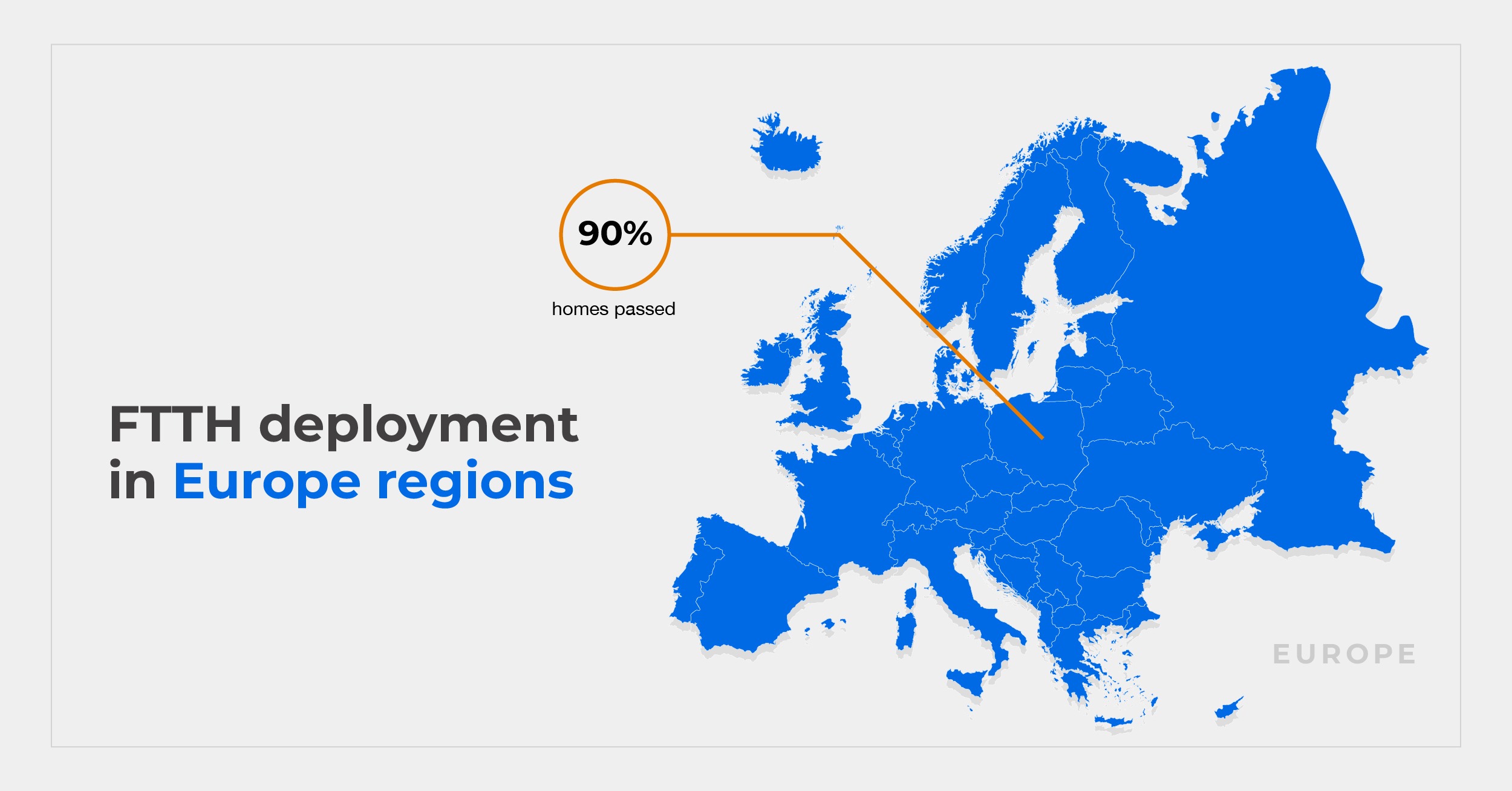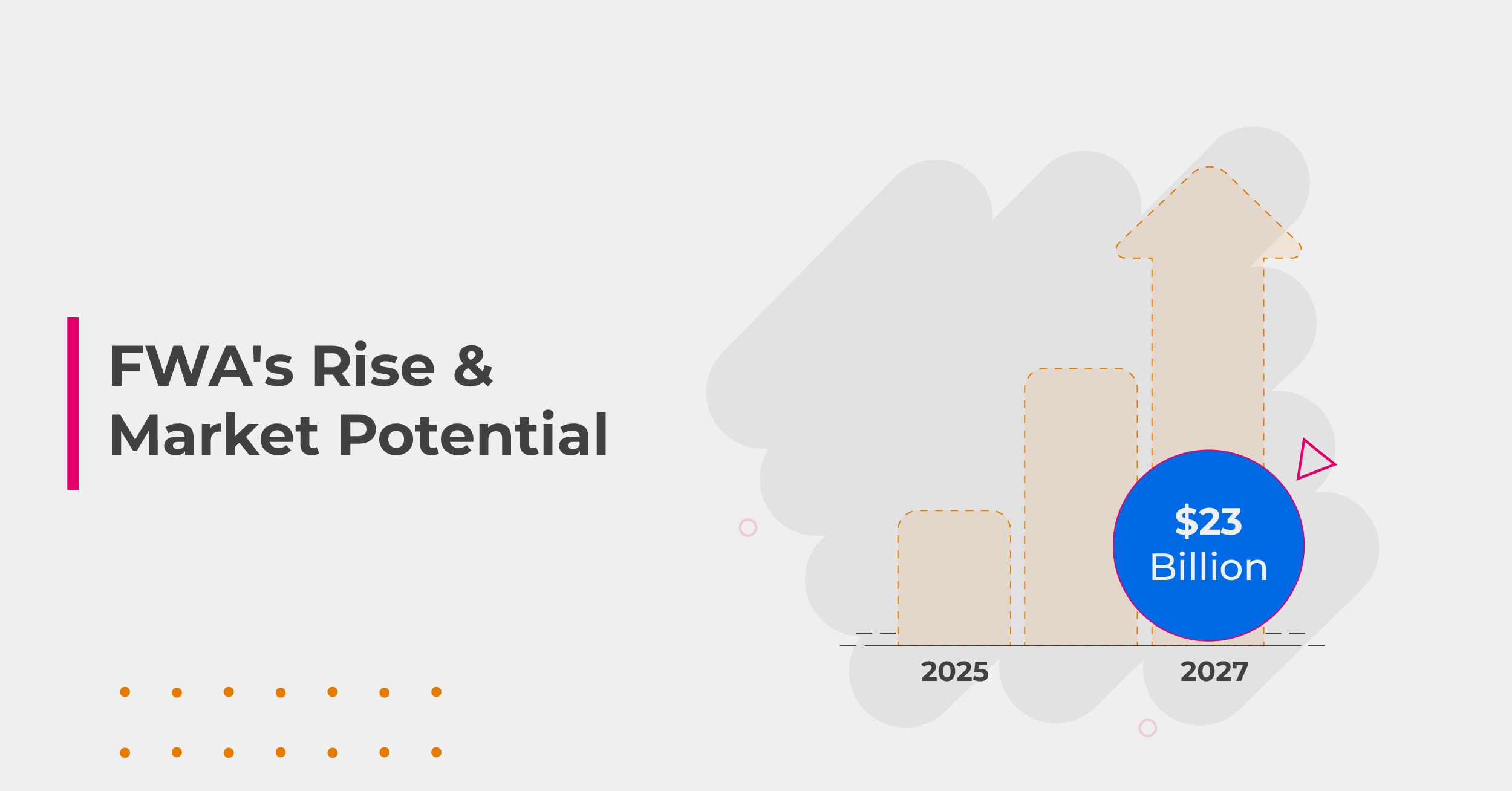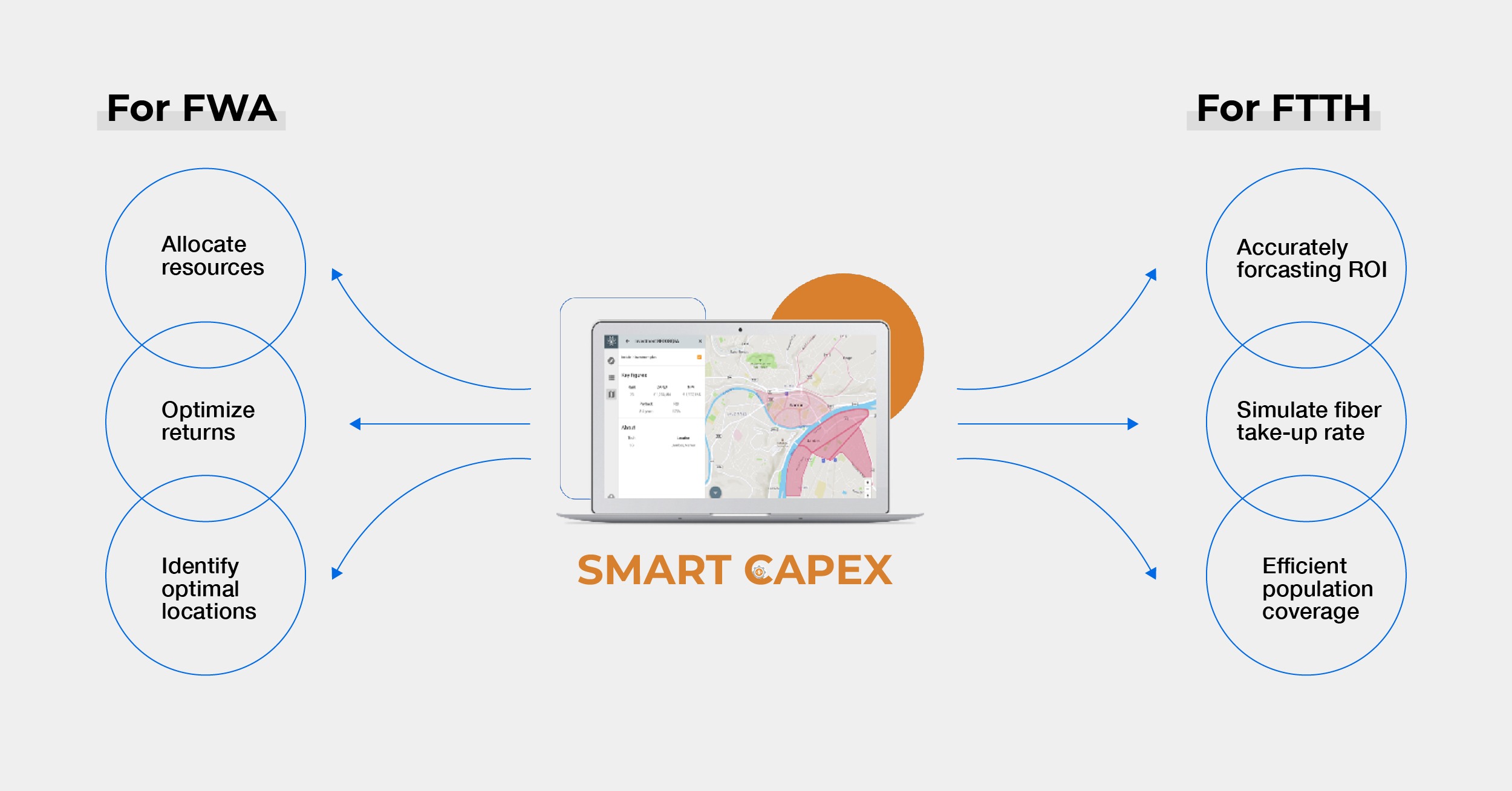In the ever-evolving landscape of the telecom industry, the demand for broadband connectivity remains unabated and so telco leaders are confronted with a pivotal decision – the choice between Fiber-to-the-Home (FTTH) and Fixed Wireless Access (FWA), each with its unique strengths and applications. With this blog, we aim to equip telco leaders with insightful market analysis, simplifying complex considerations to enable timely and strategic decision-making.
The Telecom Revenue-Growth Newsletter
Our coveted monthly newsletter compiles vetted insights on creating effective sales and distribution chains that fulfil telcos' revenue goals. That, and a lot more.
Here’s a list of what will be covered in this blog:
FTTH vs. FWA
The choice between FTTH and FWA is not a one-size-fits-all scenario; it’s a nuanced decision influenced by factors like market density, download/upload speeds, and time-to-market. FTTH excels in densely populated areas, offering high-capacity connections, while FWA finds its niche in thinly populated rural regions, efficiently reaching customers over long distances. The gray area in between requires a careful consideration of technological choices.
Market Dynamics:
FTTH deployment in regions like Europe:
The FTTH landscape in Europe is evolving, with close to 90% homes passed in certain countries like Latvia and Spain. However, challenges persist, such as administrative hurdles in Germany and a shortage of skilled workers in Italy.

Role of 5G FWA:
5G FWA enters the scene as a game-changer, providing internet access without the need for extensive last-mile fiber deployment. It serves as both a temporary solution to overcome delays in FTTH deployment and a permanent solution in areas where fiber installation is challenging.
FWA’s Rise and Market Potential:
FWA, especially with 5G, is gaining traction as a scalable, cost-efficient broadband alternative. The global market size for 5G FWA is projected to exceed $23 billion between 2025 and 2027, indicating significant growth.
FWA Speeds and Capacity:
FWA, utilizing 5G technology, offers competitive speeds, especially with outdoor antennas. While FTTH typically ranges from 100 Mbps to 1 Gbps, FWA can reach maximum speeds of around 100 Mbps, making it a formidable contender.

Practical Considerations:
FWA offers unique advantages, including easy and rapid installation, flexible spectrum options, and significantly lower CapEx and OpEx compared to FTTH. This flexibility becomes crucial in scenarios like disaster recovery. FWA also emerges as a solution for bridging the digital divide, especially in rural areas where traditional wired solutions are costly. Its ability to provide high-speed broadband quickly positions it as a valuable alternative. However, it should also be noted that FTTH technology is highly scalable, easily upgradable to accommodate higher bandwidth demands and emerging applications.
In cities with good infrastructure, FTTH is practical due to dense populations and existing underground lines. In contrast, in rural or mountainous areas, the high cost and difficulty of laying cables make FWA, a wireless solution, more suitable. FWA is faster and cheaper for connecting remote areas, avoiding the need for extensive physical infrastructure.
How can telcos make informed decisions?
MNOs today struggle to fully grasp the nuances of the market and therefore face difficulty in making informed Capex decisions; however, Smart Capex emerges as a solution to overcome these challenges, providing detailed insights and enabling telcos to make optimal investment mix decisions. For FWA, Smart Capex enables the operator to strategically allocate resources and optimize returns. By leveraging advanced algorithms, it identifies the optimal locations for FWA deployment, taking into account increased traffic and congestion-related churn. On the FTTH front, this solution goes beyond the limitations posed by existing revenue data. Through advanced analytics and data-driven insights, Smart Capex provides a robust framework for accurately forecasting ROI and simulating fiber take-up rate while ensuring efficient population coverage and home connection ratios.

Final Thoughts
The battleground between FTTH and FWA in the home connectivity arena is complex and dynamic. Whether it’s leveraging the high-speed capabilities of FTTH or the deployment flexibility of FWA, telecom operators need to navigate this landscape strategically to thrive in the competitive global market. The future of home connectivity is shaped by a careful balance between these technologies, ensuring that services enhancing the quality of life reach people around the world.


